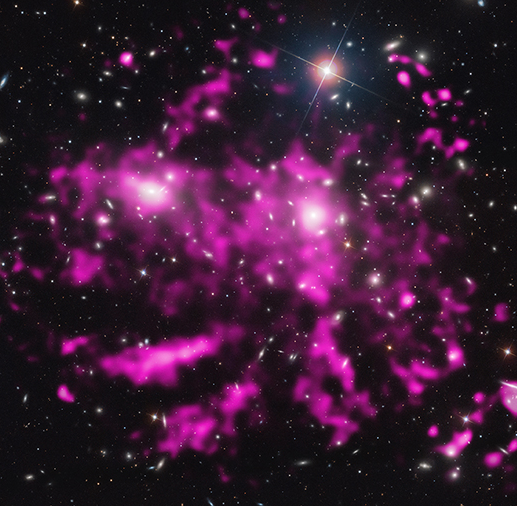Special delivery! See our visiting baby yaks (Dec. 20–Jan. 5) this holiday. Learn more
Science News
Coma Cluster Clues
October 1, 2013
by Alyssa Keimach

The Coma galaxy cluster is unique among known clusters because it contains two giant elliptical galaxies at its center. And recent news shows that this cluster may have other features we don’t see elsewhere.
Galaxy clusters, collections of galaxies bound together by gravity, occur throughout the Universe, and as clusters go, the Coma cluster is one of the largest. It contains over 1,000 galaxies, with more to be identified!
All these galaxies reside inside a giant cloud of hot, energetic gas. Astronomers using NASA’s Chandra X-ray Observatory and ESA’s XMM-Newton to observe Coma discovered huge arms of hot gas over half a million light years long.
Using the speed of sound in hot gas and the gas arms’ length, astronomers calculated the gas to be over 300 million years old! Oddly, the gas in the Coma cluster has a smooth profile, without the lumpiness astronomers expect to see in an active galactic environment. Usually galactic mergers generate significant turbulence that stirs up local gas, but this cluster seems to exist in a relatively calm environment.
This new finding, published in the journal Science, offers insight into how the Coma cluster grew from the mergers of smaller groups of galaxies. As the galaxy groups move through space, head wind strips their gas away, which later forms the giant gas arms we see now.
The multimillion-degree X-ray emission shows that the arms appear to be connected to galaxies far from Coma’s center. At least one of these arms also appears to be connected to a larger structure 1.5 million light years away. It seems that Coma’s tentacles reach for into the cosmos.
Clues hidden in the gas will tell us more about this one-of-a-kind cluster, so stay tuned!
Alyssa Keimach is an astronomy and astrophysics student at the University of Michigan and interns for the Morrison Planetarium.
Image: NASA/CXC/MPE/J.Sanders et al, Optical: SDSS